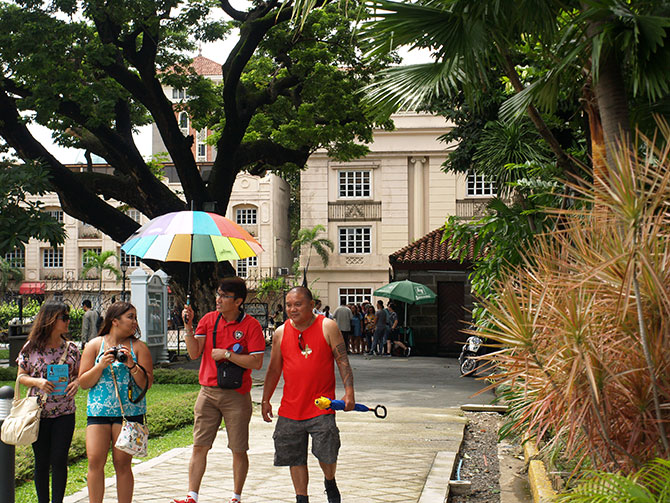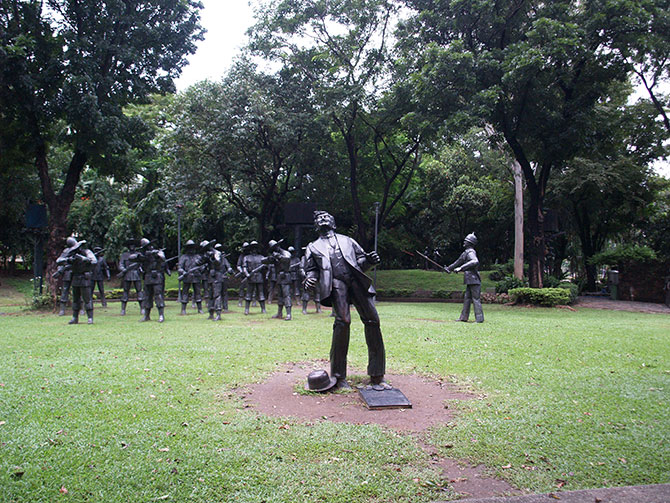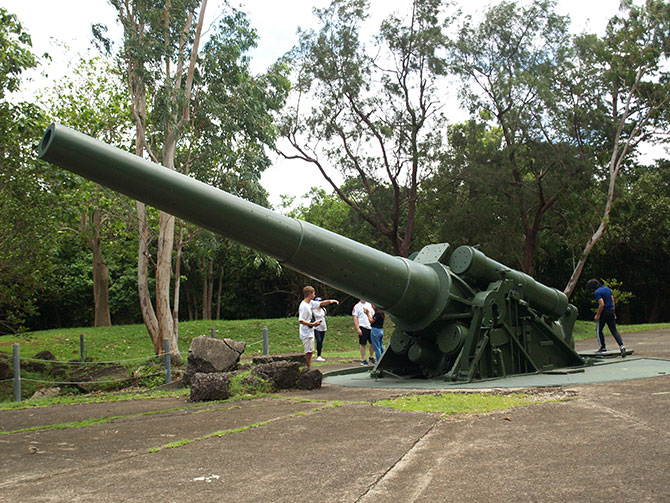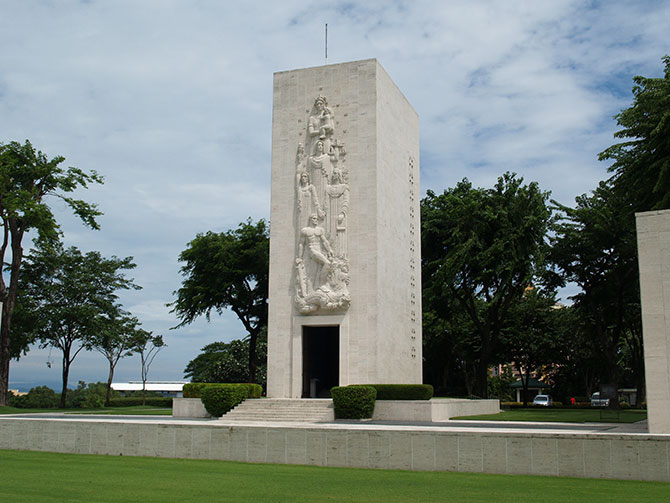
Last week I had another trip, my fourth this year. It was a little bit different this time, though.
This time there was no sea and sun, but still lots of fun. And the trip was not to a remote and secluded resort but right in the heart of Metro Manila.
Metro Manila, Philippines, is not a nice place to be. It is a concrete jungle teeming with people (22.7 million) crammed into a 613.9 sq km of land area. It is the third-largest urban area next to Tokyo and Jakarta.
Then as now, it is the capital of the country, the focal point of all that happens within this speck of archipelago in the Pacific. It was logical, therefore, that I start from there to discover the colorful history of the country.
And where history is concerned, these are the best places to go…
Intramuros:

Intramuros is a 0.67 sq km patch of land, walled all around in the 16th century, on orders by the Spanish conquistador, Miguel Lopez de Legaspi.
From within its walls emanated everything, i.e., policies, politics, commerce and trade, religion, social functions, and the colonization of the rest of the country.
Spain built schools, banks, government offices, theaters, parks, and other amenities within its walls.
Then in 1898, America and Spain warred against each other. Spain was routed and Intramuros passed into American hands.
Life in Intramuros went on, albeit quite differently.
Some structures were demolished to give way to another to suit their needs. Spanish-influenced clothes gave way to American styles and the thick Spanish “S” became an American twang.
Up until 1941 when the Japanese rained bombs on Manila, including Intramuros.
After three months of fierce close-quarters fighting, both fell to the Japanese.
For the residents of Intramuros, and the entire country, it was another beat The American twang gave way to the heavy and drawn out “R” of the Japanese.
They had to learn to bow from the waist, clear the way to approaching rifle-carrying Japanese soldiers.
This did not last long, fortunately. Three years later, in 1945 the Americans came back with a vengeance. In a very fierce battle that cost the lives of more than 100,000 Filipinos, the Japanese were driven back.
A couple of years after Americans recovered Intramuros, in 1946 the Philippines was granted independence by the U.S.
Since then, however, Intramuros remains an interesting place in Philippine history even if its historical contents have long been buried under tons of concrete and steel.
Fort Santiago:

The history of Intramuros and the country would not be complete without making mention of Fort Santiago.
Built at the same time as Intramuros, Fort Santiago’s purpose was to defend the walled city from foreign invaders.
It also served as the garrison for the Spanish forces and prison for criminals and critics against Spain.
It gained fame not of its own, but from one of its prisoners – Dr. Jose P. Rizal.
Rizal was a Filipino scholar, doctor, poet, writer, sculptor, storyteller and many others rolled into his small 4’11 stature.
He was briefly imprisoned in Fort Santiago. While there he was tried, convicted, and sentenced for sedition rebellion, and conspiracy. A couple of days later, he was executed by a firing squad in nearby Luneta (Rizal) Park.

His death was both ironic and untimely.
He was totally innocent of the crimes he was charged with. In fact, he refused several invitations from Filipino revolutionaries to join the movement.
It was untimely because two years later, the Americans drove the Spanish out of the country.
Corregidor:

Again, Philippine history is not complete if Corregidor is left out.
This small tadpole-shaped island, barely 900 hectares in size, stands tall and big in through the years.
Corregidor came from the “corregir,” a Spanish word meaning “to correct” in English. This was because all vessels had to have their cargoes checked on the island before being allowed entry into Manila.
Its role changed when the Americans came in 1898 – from an island to check cargoes, to an island fortress.
For this reason, in 1941 the Japanese rained the island with bombs, artillery shells, and machine-gun fire from airplanes for three solid months.
Without water, food, medicine, and bullets to fight back, the Allied forces were forced to surrender to the invaders.
The Japanese occupation did not last long. Barely three years later, in 1945, the Americans came back and turned the tables against the Japanese. The fighting was so protracted and costly in lives for both sides. Some Japanese even committed suicide rather than surrender.

Peace has long come to the island. The echoes of war are long gone, but the relics and scars remain as a fitting reminder of the ugliness and cruelty of war.
During the height of hostilities, the Island was scorched and burnt from the tons of bombs and mortar shells that peppered its surface. Now, lush vegetation has blanketed the thousands of craters created by the conflict, and songs of birds can be heard any time of the dead instead of the unmistakable whistle of artillery shells before impact.
From an island washed in blood and suffering, Corregidor is now a major tourist destination in the country. And it is a must-see destination and can be reached after a 2-hr ferry boat ride from Manila.
Manila American Cemetery and Memorial:

Right in the heart of Metro Manila is this 152 acres of well-manicured lawn lined with thousands of white marble crosses.
These crosses mark the resting place of some of those who showed extraordinary bravery and heroism during WW II – 17,206 in total.

It was opened in 1948 in Taguig, Metro Manila, and maintained by the American Battle Monuments Commission.
The Memorial is well visited by tourists and relatives of those whose names are inscribed in one of its huge marble pillars.
C.S. Lewis said about history:
“History isn’t just a story of bad people doing bad things. It’s quite as much a story of people trying to do good things. But somehow, something goes wrong.”
Walking through these historical sites was an unforgettable experience, yet heartbreaking to know of the thousands of men and women whose paths crossed in that particular time and place and played pawns in the perpetual dance of good and evil.
We cannot change or relive history. We can only reflect on its cause and effect and cross our fingers that we shall not be dragged into its maelstrom ever again.
Please share with others so they, too, can appreciate the value of our past.
~oOo~